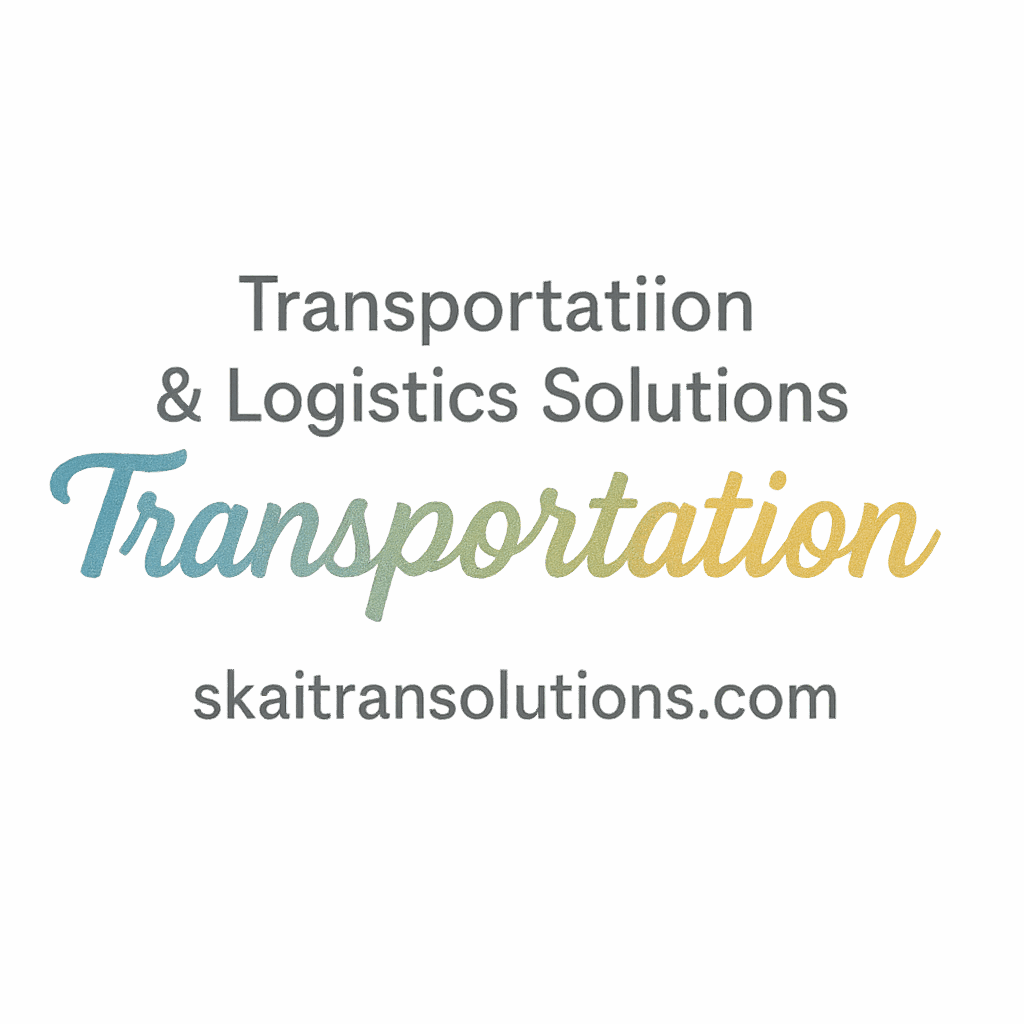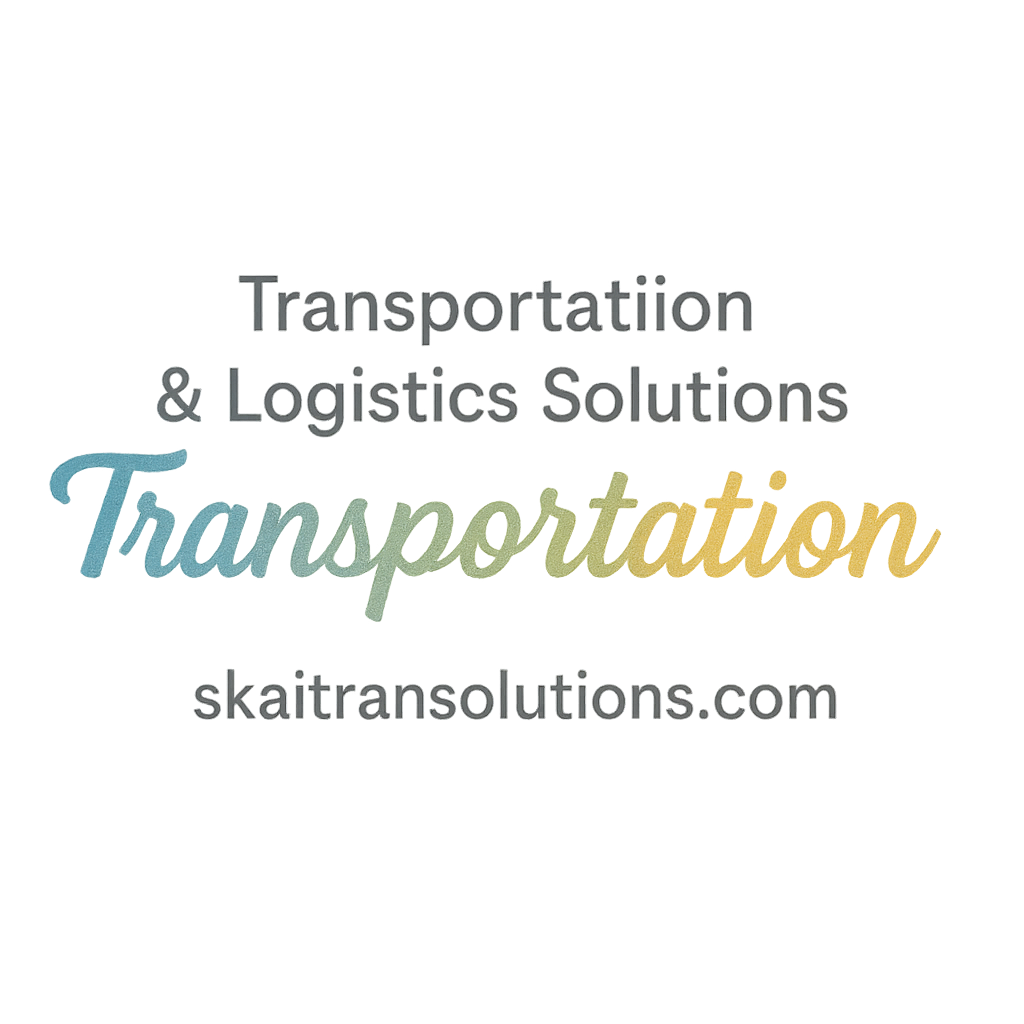When it comes to transportation, time isn’t just money — it’s everything. Delays hurt your reputation, eat into profits, and frustrate customers. But guess what? Most delays are preventable. If you’re a transportation provider looking to step up your game, you’re in the right place. This guide breaks down 10 real-world, tried-and-tested on-time delivery tactics for transportation providers.
Let’s roll!
Why On-Time Delivery Matters in Transportation
Customer Satisfaction & Loyalty
Late deliveries aren’t just an inconvenience—they’re trust breakers. In the age of same-day shipping and real-time tracking, customers expect precision. Meet expectations consistently, and you’ll earn loyalty for life.
Want to improve your customer experience even more? Visit skaitransolutions.com/customer-experience-safety for more insights.
Cost Efficiency & Operational Performance
Delays lead to overtime wages, fuel waste, missed time windows, and even penalties. An efficient system ensures every minute and mile count, reducing unnecessary expenses and improving fleet performance.
Check out skaitransolutions.com/operational-best-practices for tips on boosting operations.
1. Implement Real-Time GPS Tracking
Benefits of Live Location Monitoring
If you’re not tracking your vehicles in real-time, you’re flying blind. With GPS tracking, you get instant visibility into your fleet’s location.
Reduced Delays & Detours
With real-time updates, dispatchers can reroute vehicles away from traffic jams, accidents, or construction zones before it’s too late.
Enhanced Communication with Customers
When a client calls and asks, “Where’s my delivery?” you won’t have to guess. You’ll know—and so will they.
Explore skaitransolutions.com/transportation-technology-innovation to learn more about innovative tech in logistics.
2. Use Route Optimization Software
Dynamic Routing Based on Traffic & Weather
Modern software can automatically find the fastest, most fuel-efficient route by analyzing live traffic and weather data.
Reduce Mileage and Save Fuel
Not only do optimized routes shave off minutes, but they also cut down on fuel use—win-win.
More route planning tips are available at skaitransolutions.com/tag/logistics.
3. Maintain a Preventive Maintenance Schedule
Reduce Unexpected Breakdowns
A breakdown in the middle of a delivery run? That’s game over for your ETA. Preventive maintenance keeps your fleet in peak condition.
Use Data-Driven Maintenance Planning
Using telematics and engine diagnostic tools, you can monitor your vehicle health in real time and schedule service before something fails.
Explore this more in-depth at skaitransolutions.com/tag/vehicles.

4. Leverage Predictive Analytics
Forecast Delays Before They Happen
By analyzing historical delivery patterns, weather data, and traffic trends, predictive analytics help you anticipate and avoid bottlenecks.
Improve Dispatch Decisions
Your dispatchers become proactive rather than reactive, giving your operations a powerful edge.
Dive deeper into analytics with skaitransolutions.com/tag/kpis and skaitransolutions.com/tag/metrics.
5. Train Drivers for Efficiency & Time Management
Teach Smart Driving Habits
Drivers need more than just a CDL—they need coaching on efficient driving, like managing idle time and choosing fuel-efficient speeds.
Encourage Rest Break Management
Teach drivers how to take strategic breaks that comply with regulations without disrupting schedules.
Need compliance tips? Head over to skaitransolutions.com/tag/compliance.
6. Enhance Communication Across the Supply Chain
Driver-to-Dispatcher Connectivity
Instant communication can resolve issues like misrouting or last-minute client changes before they spiral.
Clear Coordination with Warehouses & Clients
Coordination ensures everyone’s aligned with delivery windows and special requirements—because miscommunication is the root of most delays.
Learn more about communication best practices at skaitransolutions.com/tag/strategy.
7. Set Clear Delivery KPIs and Monitor Them
Track On-Time Performance Metrics
You can’t improve what you don’t measure. Set benchmarks and monitor them religiously—like on-time percentage, delay causes, and average delivery duration.
Improve Accountability Across Fleets
When drivers know they’re being measured, they tend to perform better. It’s human nature.
Get KPI insights at skaitransolutions.com/tag/performance.
8. Invest in Modern Fleet Technology
Telematics, Dashcams & More
From ELDs to dash cams and smart sensors, modern fleet tech provides a constant stream of data to fine-tune delivery processes.
Stay Ahead of Compliance Issues
Avoid FMCSA violations and costly penalties by automating logbooks and inspections.
Check out compliance innovation at skaitransolutions.com/tag/innovation and skaitransolutions.com/tag/safety-inspections.
9. Establish Contingency Plans for Delays
Have Backup Routes & Vehicles
Flat tire? Road closure? If your fleet doesn’t have a Plan B, delivery timelines collapse.
Handle Emergencies Without Panic
Contingency planning keeps you calm and controlled when the unexpected hits.
For operational strategies, visit skaitransolutions.com/logistics-supply-chain-solutions.
10. Build Strategic Delivery Schedules
Use Buffer Times for High-Risk Routes
Not all roads are created equal. Some are prone to congestion, others to weather. Build in buffer time so minor issues don’t become major delays.
Align Schedules with Delivery Windows
Plan your deliveries when clients are available to receive them. You’d be surprised how many delays come from trying to deliver when no one’s home.
For more delivery strategies, check skaitransolutions.com/transportation-industry-insights.
Wrapping It Up: On-Time Delivery Is a Competitive Advantage
At the end of the day, on-time delivery tactics for transportation providers aren’t about being perfect—they’re about being proactive. With the right tools, training, and tech, your fleet can consistently hit those ETAs and stand out in a crowded market.
Want even more logistics insights and solutions? Don’t forget to explore skaitransolutions.com for expert resources.
FAQs
1. What is the best GPS tracking system for transportation fleets?
Look for systems offering real-time tracking, geofencing, and mobile app integration. Popular names include Samsara, Verizon Connect, and Geotab.
2. How often should a fleet undergo preventive maintenance?
A good rule of thumb is every 5,000–10,000 miles, but you should also follow OEM guidelines and monitor with telematics.
3. How does route optimization improve delivery time?
It finds the fastest, most efficient paths while avoiding traffic, road closures, and other obstacles—saving time and fuel.
4. What KPIs are critical for delivery success?
On-time rate, delay causes, delivery duration, fuel usage, and driver compliance are all essential to track.
5. How do predictive analytics work in logistics?
They use historical and real-time data to forecast delivery delays, helping dispatchers and planners stay ahead of issues.
6. What’s the most common reason for delivery delays?
Traffic congestion and vehicle breakdowns are the top culprits—both of which can be managed with proper tools and planning.
7. Can small fleets benefit from these tactics too?
Absolutely. Even a three-vehicle fleet can use tech, training, and planning to stay competitive and on schedule.


